- Home
- Peter Ackroyd
Foundation Page 6
Foundation Read online
Page 6
The people of the south were wealthier if not healthier than their counterparts in the north. So the climate is active in human history. It may also be that the drier east creates human communities different from those of the rainier west; marked contrasts of social systems in the first millennium BC are in fact evident, with small centres of lordly power in the west and more scattered settlements in the east. The isolated farmhouse and the small hamlet were characteristic of the north and west; the village and the manorial system of common cultivation were more usual in the south and east.
At the time of the Roman occupation the weather was warmer than at any period in subsequent history, but this was succeeded by colder and wetter conditions by the end of the fourth century. For ten years, beginning in AD 536, there was a very low level of sunlight; this would have been a time of dearth and famine, hitherto unrecorded. It might also be noted that Alfred was credited with the invention of a clock that allowed him to tell the time when the prevailing fogs obscured the sun.
The climate of 1009 and 1010 was recorded by a Benedictine monk, Byrhtferth, who dwelled in East Anglia; the winter lasted from 7 November to 6 February, being cold and moist; the spring from 7 February to 8 May was moist and hot; summer from 9 May to 6 August was hot and dry; autumn from 7 August to 6 November was dry and cold. He was only one of the clerics who kept a detailed record of the conditions of the weather.
The eleventh and twelve centuries were in fact warmer than those immediately preceding them, but a deterioration of climate took place in the thirteenth and fourteenth centuries; the annals of these later centuries also mention the increasing incidence of floods and droughts, suggesting greater instability. Hard frosts lasted into spring, and violent gales brought down the trees of the forests. The Thames froze in the winter of 1309 – 10, and the years 1315 and 1316 were marked by endless rain. The harvests failed, and the dead were buried in common graves. It was a time of epidemic disease. Crime rates rose proportionately.
The increase of rainfall, in the fourteenth century, is marked by the construction of drainage ditches and house platforms; church floors were raised, and the lower halves of some villages were deserted. The carpenter in Chaucer’s ‘The Miller’s Tale’ reveals an obsessive fear of another Great Flood covering the earth. The extraordinary wind of 14 January 1362 was widely believed to be a harbinger of the Day of Judgment. In the medieval period the weather is the lord of all. Outer weather creates inner weather. It would be possible to write the history of England as the history of the English climate.
4
Spear points
The Anglo-Saxon Chronicle, composed long after the events related, reports that in 449 ‘Hengist and Horsa, invited by Wyrtgeorn’ arrived in England; they had come to help the English against invaders, but they stayed only to fight against their hosts. Hengist and Horsa mean respectively ‘horse’ and ‘mare’. Wyrtgeorn, or Vortigern, is simply the term for an overlord or over-king. In some of the Welsh annals he is also known as Vortigern ‘of the repulsive mouth’. So, as always, there are elements of mythology embedded within the history. The dates are also wrong.
The evidence suggests that in 430 Vortigern, the leader of the confederacy of small kingdoms into which much of the country had divided, called in Saxon mercenaries to defend England against the Picts from Scotland and various marauding bands from Ireland. This was an old and familiar strategy, used by the Romanized English at various points in their history.
The Irish landed on the west coast, within easy reach of the Cotswolds; the central part of Vortigern’s kingdom lay in that hilly region, which may account for his leading role in the struggle. It is reported that the Picts had landed in Norfolk. The Pictish sailors painted their ships, and their bodies, the colour of the waves so that they could less easily be seen. So the decision to call in the Saxons was born out of fear and urgency. According to historical legend they came in three ships, holding at best only a few hundred men. There are likely to have been more ships but, in any case, these mercenaries were known for their ferocity as well as for their valour. The bands of warriors, under a war chieftain, worshipped the sun and the moon. They adored Woden, god of war, and Thor, god of thunder. They practised human sacrifice. They drank from the skulls of their enemies. The fronts of their heads were shaved, the hair grown long at the back, so that their faces might seem larger in battle. ‘The Saxon’, a Roman chronicler of the fifth century wrote, ‘surpasses all others in brutality. He attacks unforeseen, and when foreseen he slips away. If he pursues, he captures; if he flees, he escapes.’
The most significant elements of the Saxon force were stationed in Kent, and were given the island of Thanet in the Thames estuary. Other bands of soldiers were placed in Norfolk, and on the coast of Lincolnshire. The Icknield Way was guarded. London and the Thames estuary were defended. The remains of the Romanized armies, still in the north, were stationed in a strongly fortified York. Then, on the invitation of Vortigern, more Saxon mercenaries were brought to England. The show of strength seems to have been enough. The Picts abandoned their plans for the invasion. The Irish were in turn checked by the tribal armies of the west and the west midlands; the kingdom of the Cornovii, with its capital at Wroxeter, was instrumental in that repulse to the invaders.
Yet now a more insidious threat to Vortigern’s leadership emerged. His allies, alarmed at the cost of the Saxon presence, could not or would not pay them. They also refused to yield land in exchange for payment. After the immediate threat had passed, they declined to subsidize their defenders. According to the Kentish chronicles they declared that ‘we cannot feed and clothe you, because your numbers have grown. Leave us. We no longer need your assistance.’
The reaction of the mercenaries was immediate and strong. Their insurgency began in East Anglia, and then spread down to the Thames Valley. They took over many of the towns and countryside areas in which they had been stationed. They appropriated large estates, and enslaved many of the native English. They had seen at first hand the prosperity of the land and had acquired a taste for it. Thanet itself, as a granary, was a golden prize. The Saxon federates then sent out a call to their compatriots. Come and settle here. Together we can master the natives.
So the Germanic migrants kept on coming. Among them were four predominant tribes – the Angles from Schleswig, the Saxons from the territories around the river Elbe, the Frisians from the northern coast of the Netherlands, and the Jutes from the coast of Denmark. There were no such people as ‘Anglo-Saxons’ until the chroniclers invented them in the sixth century. The routes of settlement were already established by the river system. The settlers pushed along the Thames, the Trent and the Humber.
The Jutes settled in Kent, Hampshire and the Isle of Wight; the New Forest was once Jutish land. The Saxons were established in the Upper Thames valley. The Frisians were scattered over the south-east, with an important influence in London. The Angles settled in eastern and north-eastern England; by the early sixth century the people of east Yorkshire were wearing Anglian clothes. These were small tribes, small communities under a leader or leading family. Some were resisted; some were welcomed. Others were simply accepted by a working population who had no real love for their earlier native masters. All were accommodated and, according to the best genetic evidence, eventually made up 5 per cent of the population we now call English; in the eastern regions it may have reached approximately 10 per cent, but there is no hint of deliberate genocide and replacement of the native population.
They came because they were being pushed by other tribes in the great westward migrations of that era, but they also came because their ancestral lands were in peril from the rising sea. This was the period in which the northern European coastline was sinking, as the archaeological evidence from Germany and the Netherlands testifies; there was urgent need to find land elsewhere.
The revolt of the Saxon federates was a decisive blow to the prestige and authority of Vortigern. He was overthrown by another Romanized En
glish leader, Ambrosius Aurelianus, who led a counter-attack upon the Saxons and for ten years engaged in a series of strenuous battles. In 490 the English won a great victory at a place known to posterity as Mons Badonicus, believed to be near modern Bath. The leader of the English forces on that occasion is not recorded, but in this period the name of Arthur emerges as overking. He is a shadow in the historical record, known only as dux bellorum or ‘leader of warfare’. He is said to have participated in twelve battles against the Saxons, but the places cannot now be identified. In the pages of the medieval romances he is a great king with a shining court at Camelot, otherwise known as Winchester; in truth he may have been a military commander whose headquarters were within the hill fort of Cadbury. 18 acres (7.2 hectares) of that hill fort were enclosed in the period of Arthur’s supposed lifetime.
The English had survived but, as part of the spoils of war, the Saxons retained their control over Norfolk, East Kent and East Sussex. There was a division in the country, perhaps marked by the construction of the Wansdyke designed to keep the Germanic people from crossing into central southern England. On one side of that barrier were small English kingdoms; on the other, Germanic tribes with their warrior leaders. What had previously been some of the most Romanized parts of the country had become the home of ‘barbarians’. The town and villa life of these regions was, therefore, in abeyance. An English chronicler of the early sixth century, Gildas, laments that ‘the cities of our country are still not inhabited as they were; even today they are squalid deserted ruins’. This was the process of the Saxon ‘invasion’.
Yet some towns and cities were still in active use, as markets and places of authority. It is well known that the Saxons set up their own trading area outside the walls of London, in the district now known as Aldwych, but the old city was still a place of royal residences and public ceremonial. In the countryside, there is even greater evidence for continuity of settlement. It is not to be expected that any change in agricultural practice took place. The same field systems were laid out by the Germanic settlers; the new arrivals respected the old boundaries and in Durham, for example, Germanic structures were set within a pattern of small fields and drystone walls created in the prehistoric past. More surprisingly, perhaps, the Germanic settlers formed groups that honoured the boundaries of the old tribal kingdoms. They respected the lie of the land. The sacred sites of the Saxons, at a slightly later date, follow the alignment of Neolithic monuments. All fell into the embrace of the past.
The Germanic settlers were kept within their boundaries by the English for two or three generations. It should not be forgotten that, in this period, the average life expectancy was thirty-five years. It was a country of young men and women, with all the energy and thoughtlessness of the young. The leaders of the country were brash, vibrant and energetic.
By the middle of the sixth century the Germanic people wished to move further west, and to exploit the productive lands that had previously been beyond their grasp. There are many reasons for this sudden efflorescence of activity, but one of the most convincing lies in the onset of deadly plague in the 540s. Bubonic, and perhaps pneumonic, plague spread from Egypt all over the previously Romanized world. It seems that it struck down the native English rather than the settlers, with a force and scope that rival the great plagues of the thirteenth and seventeenth centuries. Some actuarial experts suggest that a population of 3 or 4 million now dropped to 1 million. The land was left vacant, and fewer men were available to defend it. So the Angles, and the Saxons, moved westward. Anglo-Saxon civilization was created by a pandemic.
One of the leaders of the Saxons, Ceawlin, had reached as far as Cirencester, Gloucester and Bath by 577; seven years later his forces had penetrated the midlands. The native kings were thereby deposed. This was the pattern throughout the country. The pressure was growing on the Durotriges of Somerset and Dorset and as a result there was an exodus of native people to Armorica, on the Atlantic coast of north-western France, where their leaders took control of large tracts of land. They may have been welcomed. They were perhaps part of the same tribe. So the region of Brittany emerged. The Bretons in fact retained their old tribal allegiances, and never really thought of themselves as part of the French state. Some of them came back. A Breton contingent was among the forces of William the Conqueror, which chose to settle in south-west England. They had come home at last.
In the end the natives would be so mixed and mingled with the new settlers that the term Saxon or Angle ceased to have any meaning. All would become English. Yet it was a slow process. Much of western England was still under the rule of native kings 200 years after the first Saxons arrived; the native kingdom of Elmet, now known as the West Riding of Yorkshire, survived until the early seventh century and the ‘Anglo-Saxon invasion’ only came to an end with the capture of Gwynedd by Edward I in 1282. Celtic speakers were to be found in Cornwall at the beginning of the sixteenth century, and the language did not wholly die until the eighteenth century.
The settlements of the Germanic tribes took the form of small folk territories, made up of groups of warriors and marked off by river boundaries. So the followers of Haesta created Hastings and the followers of Gilla established Ealing. The people of the Peak district, the people of the Chilterns, and the people of the Wrekin, were all given distinct topographical names. Jarrow means ‘among the Jyrwe’, a small tribe found in the fen district as well as in Northumberland. The immense number of small tribes was gradually aligned for the purposes of defence or warfare. Over-kings emerged as the leaders and protectors of tribal chiefs, and by 600 the recognizable kingdoms of Anglo-Saxon England begin to enter recorded history. The kingdom of the East Angles was formed together with those of the East Saxons and the Mercians.
These were societies of rank, based upon a structure of burdens and obligations imposed by the warlords and their entourage. There were slaves, there were landless workers, there were ceorls or free heads of households, and there were thegns or noblemen, with all possible divisions and distinctions within each rank. The financial penalties for murder, for example, were graded according to the ‘worth’ of the victim. It was a harsh and divisive society, only made possible by the continuous exploitation of the unfree. In that respect, it may not have differed very much from any previous English polity. There never was any Rousseau-esque state of equality in nature. There always was a system of lordship and vassalage.
And what of the native English? They endured the change of leadership. Most of them worked the soil, as before, and paid tax or tribute to the local lord. The ordinary routines of life are never chronicled by the historian, but they make up almost the whole of experience. The artisans and merchants were still here. It was in the interest of the Angles and the Saxons to utilize what remained of Romanized English civilization. They did not exterminate the native population because they needed it. They had no aversion to the practices of the open field and could quickly accustom themselves to working the land according to the traditional methods of the English.
In the first years, however, there may have been a form of separation or apartheid between settlers and natives. The Germanic walh means Celtic speaker or Latin speaker; it also came to mean a serf or a slave. The name of Wales derives from this. So we have Cornwall, and places known as Walton, Walsall and Walcot. We can also deduce the presence of native English in what is now north-east London in Walthamstow and elsewhere. The reader will be able to identify many other examples. The native population survived.
Christianity was not driven out of England by the invaders. Early churches have been found in London, embedded within Roman edifices, as well as in York, Leicester and Exeter. Churches were located in other towns, and of course in western England – beyond the reach of the Germanic tribes – the religion flourished with the appearance of small monastic communities. One was situated on top of Glastonbury Tor.
The eventual shape of England itself was becoming clear as the Germanic tribes continued their expansio
n. In the north the settlers were first confined to East and South Yorkshire; these areas may already have harboured Germanic troops, and may therefore have welcomed their arrival. They formed the kingdom of Deira, roughly comprising what is now Yorkshire from the Humber to the Tees. An Anglian community was established at Bamburgh, where the castle still stands. A great Anglo-Saxon cremation cemetery is to be found by the village of Sancton, in the East Riding of Yorkshire, and as late as the nineteenth century the villagers used pots and urns taken from the site. The native tribes, the Parisii and the Brigantes, tried to contain these powerful Germanic settlers, but they proved unsuccessful.
Under the leadership of their king, Aethelfrith, according to the history of the Venerable Bede, the settlers conquered many territories and many peoples by the end of the sixth century; they ‘either drove out their inhabitants and planted them afresh with their own people, or subdued them and made them tributary’. That was the familiar process of colonization. Aethelfrith became king of both Deira and Bernicia, the kingdom to the north of Deira that stretched from Durham to Edinburgh and from Derwentwater to Ayrshire. He can thus be truly considered the first king of Northumberland.
The native tribes and kingdoms were divided among themselves, and could not arrest the momentum of the invaders. The old kingdoms – Rheged (north-western England), Strathclyde (south-western Scotland), Gododdin (north-eastern England and south-eastern Scotland) – fell. The warbands slowly moved northward and westward. The Germanic settlers may have been few in number, but they eventually controlled a huge territory of moorland and hill with scattered farmsteads and cottages. Yet the old traditions survived in the fastness; that is why Yorkshire and Northumberland retained much of their ancient organization and custom.

 The Clerkenwell Tales
The Clerkenwell Tales The Canterbury Tales
The Canterbury Tales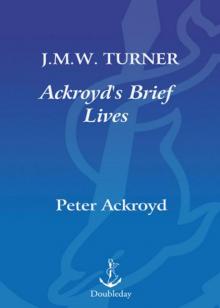 J. M. W. Turner
J. M. W. Turner Chatterton
Chatterton The Canterbury Tales – A Retelling
The Canterbury Tales – A Retelling Alfred Hitchcock
Alfred Hitchcock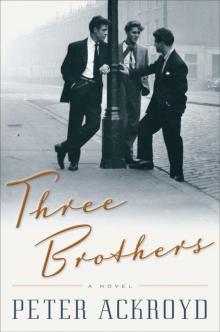 Three Brothers
Three Brothers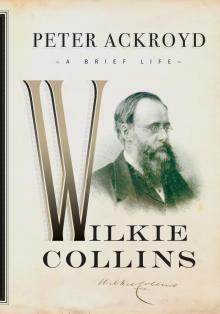 Wilkie Collins
Wilkie Collins Venice
Venice Poe
Poe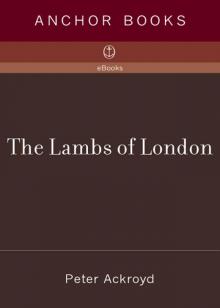 The Lambs of London
The Lambs of London London
London Queer City
Queer City Revolution, a History of England, Volume 4
Revolution, a History of England, Volume 4 Venice: Pure City
Venice: Pure City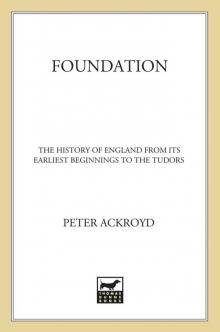 Foundation
Foundation Thames
Thames The Plato Papers
The Plato Papers The house of Doctor Dee
The house of Doctor Dee Rebellion: The History of England from James I to the Glorious Revolution
Rebellion: The History of England from James I to the Glorious Revolution Albion: The Origins of the English Imagination
Albion: The Origins of the English Imagination The Fall of Troy
The Fall of Troy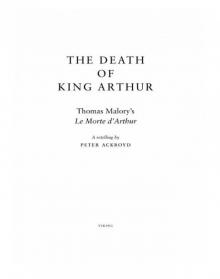 The Death of King Arthur
The Death of King Arthur The Trial of Elizabeth Cree
The Trial of Elizabeth Cree London: The Biography
London: The Biography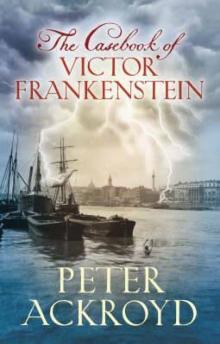 The Casebook of Victor Frankenstein
The Casebook of Victor Frankenstein Hawksmoor
Hawksmoor Charlie Chaplin
Charlie Chaplin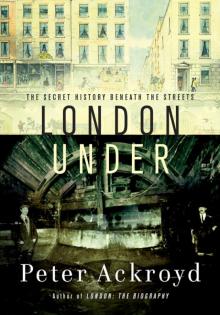 London Under
London Under